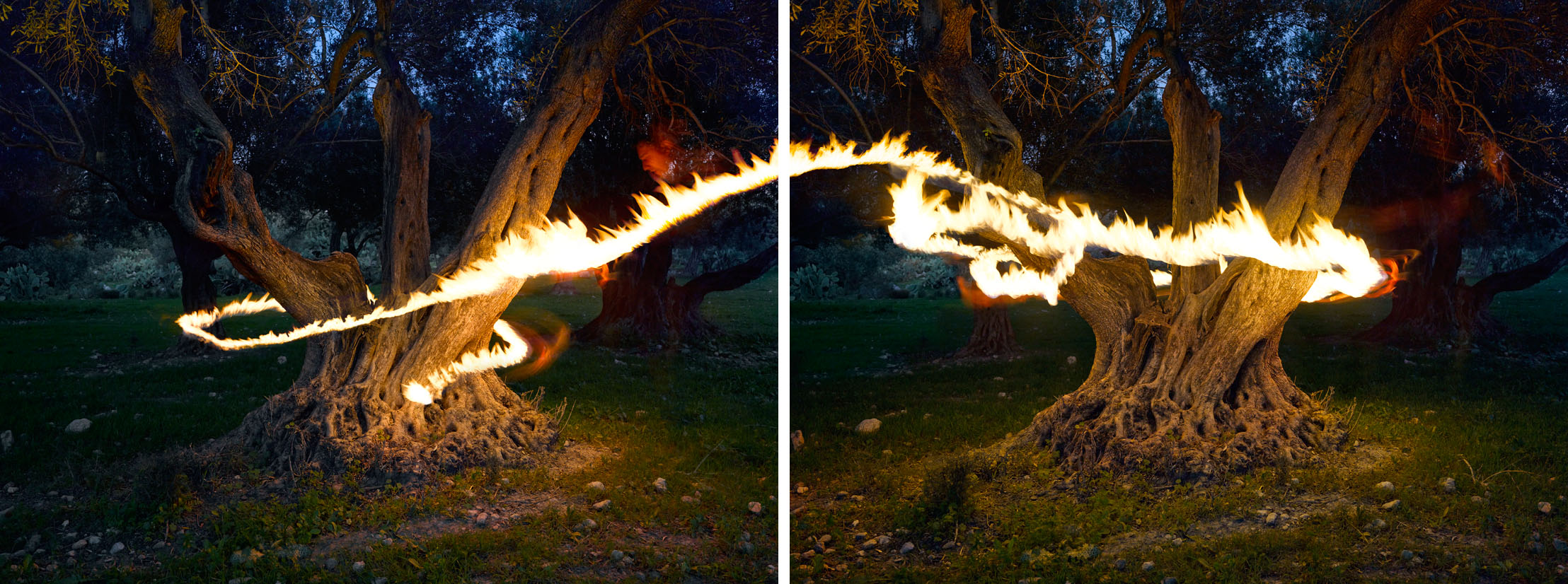












Following his internationally celebrated World Trade Centre: Concrete Abstract series, Kremer returns to addressing his interest in the political and social situation surrounding Israel and Palestine.
The Green Line refers to the temporary geographic border set up between Israel and Palestine after an agreement with their neighbouring Arab countries in 1949. It owes its name to the actual colour used in the elaboration of new maps, and depicts the geographical areas until the war of 1967, when Israel conquered the West Bank, the Gaza Strip, the Golan Heights, and the Sinai Peninsula, taking control over many areas demanded by Palestine.
Through detailed exploration of the symbolic Green Line, Kremer’s photographs touch upon the hardening of the social frontiers and their impact, research past and present mappings, and encourage viewers to imagine a resolution to the Israeli–Palestinian conflict. As an Israeli living abroad, Kremer’s gaze is not embedded into one side of surrounding structures. He has observed how the use of the term “Green Line” has began to fall into oblivion in conversations back in Israel. “It was a pillar of my political education, and a fundamental theme of the conflict,” Kremer recalls, “the apathy of the Israeli psyche towards its progressive disappearance from the political discourse reflects a disturbing shift that I feel needs to be questioned.”
In order to emphasize the intricacy of the Green Line’s multiple perceptions, this exhibition is configured in two parts. The first one metaphorically alludes to the immateriality of the line itself, through photographic green-light-drawings in a conceptual, generic, natural landscape. Displaying the works as mirror-like diptychs symbolizes how two various narratives/solutions can be applied to a single place/situation. Yet, the storylines are always merged to each other, connecting not just the photographs, but also the realities that they address. The viewer is enticed into neutral landscapes that prevent any political rejection.
The second part introduces a more concrete notion of reality. French historian Pierre Nora states in his theory of the Lieux de Mémoire (sites of memory) that places in landscapes have the intrinsic capacity to serve inner identity. (in Nora, Pierre (1984). Les lieux de mémoire. Paris: Gallimard). The images in this section were shot along the Green Line, amongst authentic local symbols of the conflict, and with the collaboration of Israeli and Palestinian participants—The Parents Circle Families Foroum, a joint Palestinian–Israeli organization of over six hundred families that have lost a close family member in the conflict.
Learn more about
The Parents Circle Families Forum.